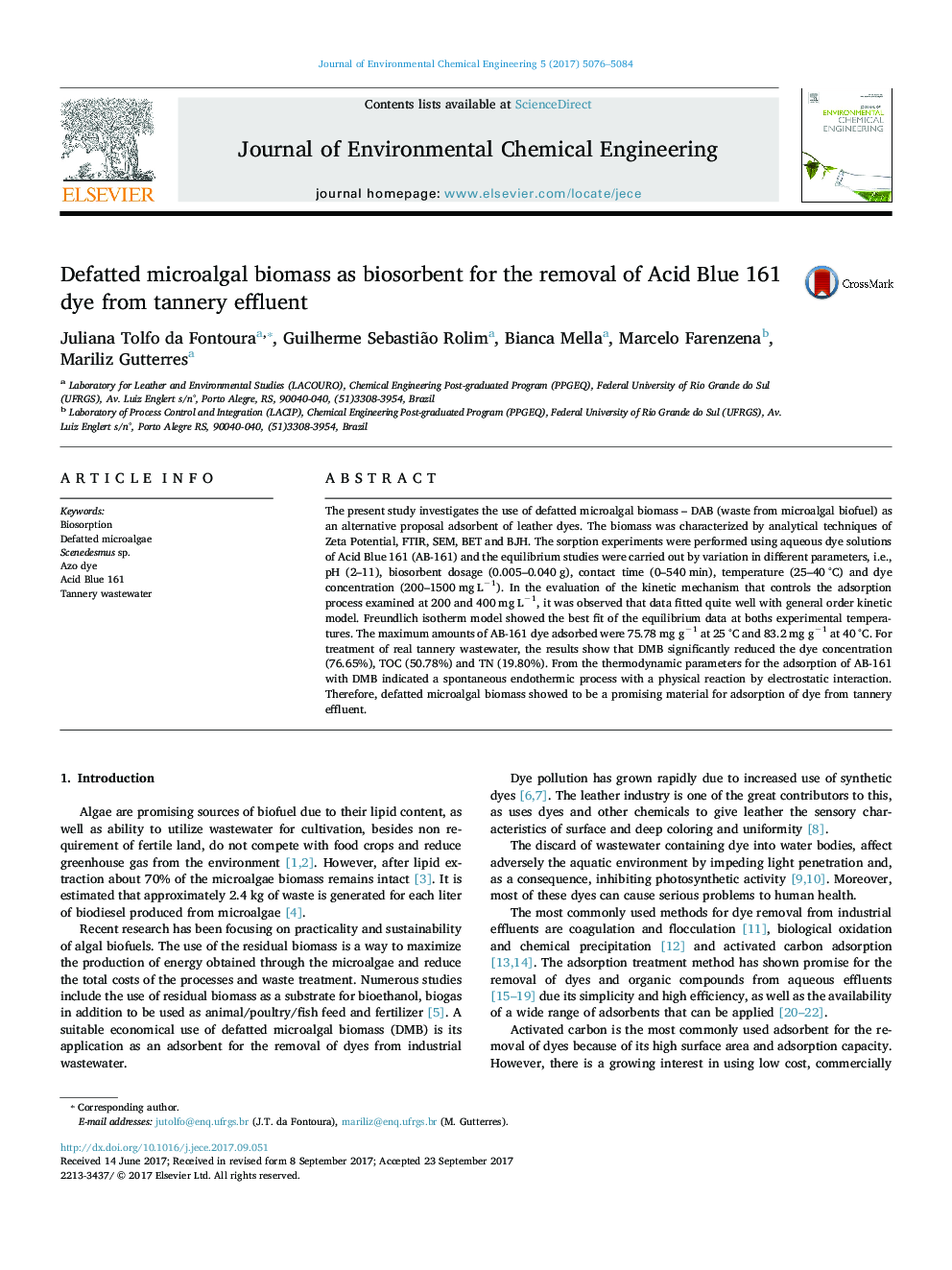| Article ID | Journal | Published Year | Pages | File Type |
|---|---|---|---|---|
| 6664339 | Journal of Environmental Chemical Engineering | 2017 | 9 Pages |
Abstract
The present study investigates the use of defatted microalgal biomass - DAB (waste from microalgal biofuel) as an alternative proposal adsorbent of leather dyes. The biomass was characterized by analytical techniques of Zeta Potential, FTIR, SEM, BET and BJH. The sorption experiments were performed using aqueous dye solutions of Acid Blue 161 (AB-161) and the equilibrium studies were carried out by variation in different parameters, i.e., pH (2-11), biosorbent dosage (0.005-0.040 g), contact time (0-540 min), temperature (25-40 °C) and dye concentration (200-1500 mg Lâ1). In the evaluation of the kinetic mechanism that controls the adsorption process examined at 200 and 400 mg Lâ1, it was observed that data fitted quite well with general order kinetic model. Freundlich isotherm model showed the best fit of the equilibrium data at boths experimental temperatures. The maximum amounts of AB-161 dye adsorbed were 75.78 mg gâ1 at 25 °C and 83.2 mg gâ1 at 40 °C. For treatment of real tannery wastewater, the results show that DMB significantly reduced the dye concentration (76.65%), TOC (50.78%) and TN (19.80%). From the thermodynamic parameters for the adsorption of AB-161 with DMB indicated a spontaneous endothermic process with a physical reaction by electrostatic interaction. Therefore, defatted microalgal biomass showed to be a promising material for adsorption of dye from tannery effluent.
Related Topics
Physical Sciences and Engineering
Chemical Engineering
Chemical Engineering (General)
Authors
Juliana Tolfo da Fontoura, Guilherme Sebastião Rolim, Bianca Mella, Marcelo Farenzena, Mariliz Gutterres,
